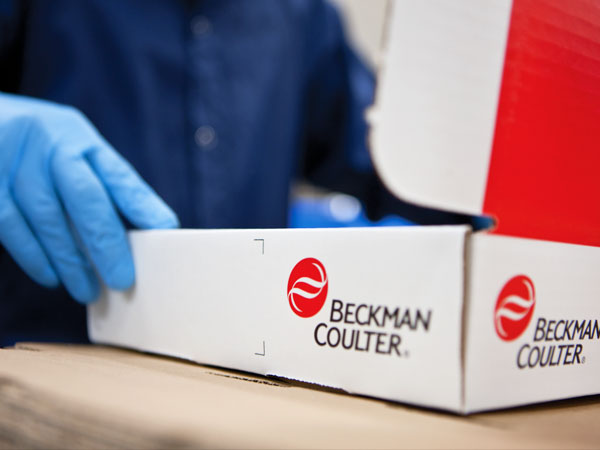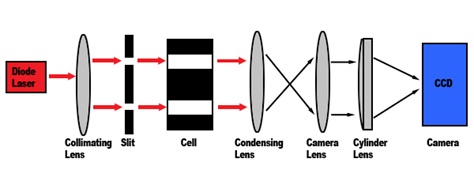How does a Rayleigh interferometer work?

When light passes through a substance, it tends to refract. As concentration changes, the fringe pattern shifts. This is the basis for a Rayleigh interferometer.
Light from a diode laser passes through a collimating lens, creating two parallel light waves. These waves pass through the reference buffer and sample in the analytical cell. A series of lenses focus the resulting image onto a charge-coupled device (CCD) camera, which digitally captures the resulting fringe pattern in a single snapshot.


